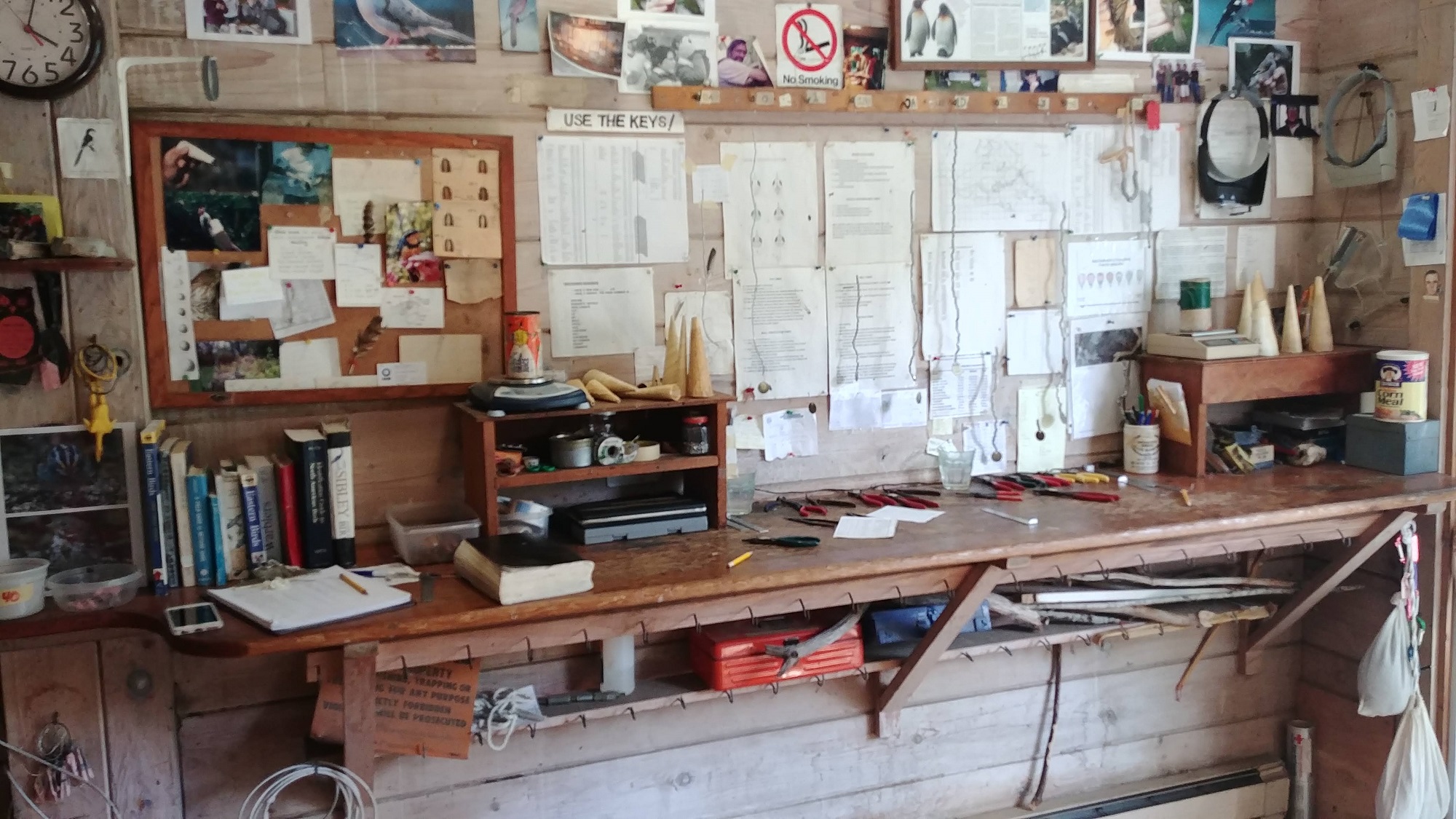
The Manomet Banders

This week brought north winds, rainy mornings, and migrants to Manomet’s banding lab. Finally, cooler weather has arrived and with it several new species of birds. We ended the week with 115 new birds banded and 64 recaptures processed. This brings our season total to 403 new birds banded and 251 birds processed. Monday was warm but cloudy and our most diverse day of the week, totaling 14 species including a Connecticut Warbler and Nashville Warbler. Other notable captures this week included a Prairie Warbler, two Sharp-shinned Hawks, and a Yellow-breasted Chat, bringing our species total for the fall up to 47. Thrushes have also started to arrive, with a Hermit Thrush, Veery and 10 Swainson’s Thrushes banded this week.
On Tuesday the remnants of Hurricane Florence passed through, bringing high winds and rain that prevented the nets from being open for long. The sky cleared late bringing a vibrant, pink sunset. Wednesday was rainy early in the day, and an American Toad made use of the banding deck by hunkering down in the leaves. Small neonate amphibians and reptiles continue to be seen dispersing from the wetlands around the property, especially on the rainy mornings.
Friday had the two biggest surprises of the week. A Ruby-throated hummingbird was caught, a migrant that we thought may have passed us by. And thrillingly, a Bay-breasted Warbler. Overall similar to Blackpoll Warblers in the fall, Bay-breasted Warblers have dark gray feet, peachy sides and undertail coverts. Small amounts of chestnut coming through on its head gave this bird away as a hatch-year male.
Our first educational group of the season visited on Friday. A group of homeschoolers got a banding demonstration and were led on a net run. While on the net run, the kids were treated to close-up views of White-tailed deer, a Common Garter snake and a Wood frog. Seaside goldenrod bloomed this week on the farm, with its larger flowers and thicker, more succulent like leaves, this plant is more suited to the salty air and sandier soil along the shore than other goldenrods. As fall migration continues, keep an eye out for new species of sparrows arriving on the farm and hedgerows, feeding on seeds from flowers that have gone by.





 Back to all
Back to all